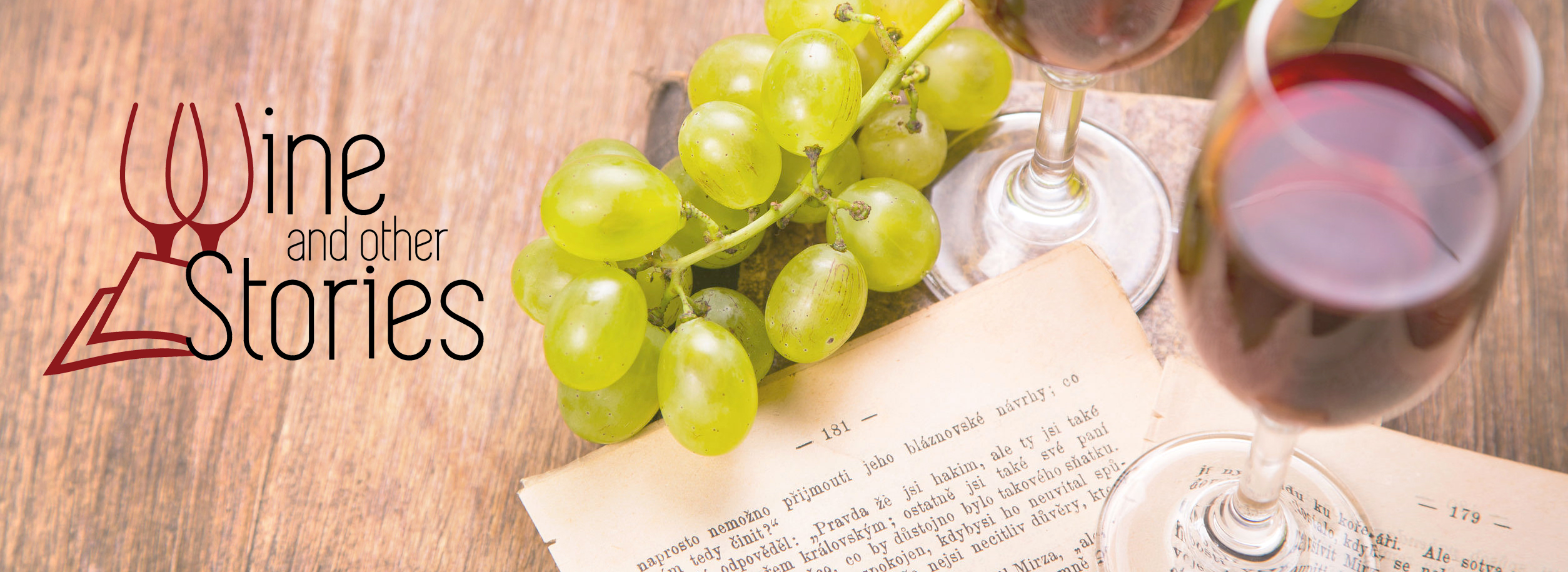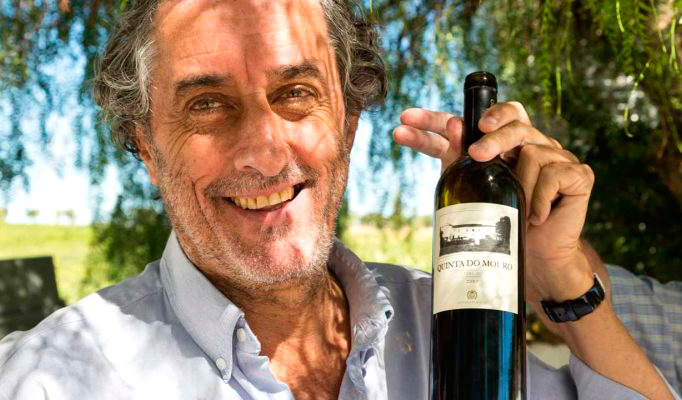Poker, a missed Porsche and a “genie” are the ingredients of this wine tale. Set in beautiful Alentejo (Portugal). The story of Quinta do Mouro and its charismatic winemaker, Miguel Louro. Includes tasting notes
Can somebody be destined to make wine? I don’t believe in fate (at least not as the only force driving events). However, the more I delve into Miguel Louro’s story, the stronger my impression that the universe somehow conspired to persuade him to produce wine. You might say Miguel Louro tried to set his path onto something different. But eventually wine caught him. And, having recently tried one of his creations (Quinta do Mouro Tinto – see tasting notes below), I can only thank him – and fate? – for that.
Miguel Louro: “the genie”
The man behind Quinta do Mouro is Miguel Louro. His website refers to him as “The Genie”. Unconventional, provocative, bad-tempered, creative. These are some adjectives that might describe Miguel Louro’s multi-faceted personality.
When Miguel Louro was 25 years old, he loved cars and speed. His dream was to buy a Porsche. He was also a decent poker player. Lady Luck smiled on Miguel Louro and he won a series of games which secured him enough money to actually buy a Porsche. But while the money for the Porsche was burning in his pocket, he happened to visit a dilapidated estate in Estremoz, in the heart of the Alentejo region of Portugal. It was love at first sight (and if you see pictures of the estate you can sympathise with the young Miguel). Instead of securing a Porsche in his garage, Miguel Louro decided to buy the estate.

Despite this purchase, Miguel Louro had no intention of making wine. He decided to breed livestock. “Porcos e vacas” (pigs and cows) to put it in Miguel Louro’s unembellished words. This pastoral adventure did not go very well. Unable to pay his bills, he needed a more lucrative activity. Did he turn finally to wine? Nope.
Miguel Louro decided to become a dentist. He bought a doctor’s office in Évora, half an hour drive from his chateau in Estremoz. That left the question on what to do with the 6 hectares in Estremoz. Flippantly he thought, why not produce wine? However not just “some wine”. In line with Miguel Louro’s ambitious and idiosyncratic personality, he decided to craft the most traditional and unique Alentejo wines. Wine had finally made its way into Miguel Louro’s life. Quinta do Mouro was created.
Alentejo
Portugal is a fascinating wine country, offering a plethora of great wines, from different regions and a myriad of native grape varieties. As often happens with great estates, the history of Quinta do Mouro is also (at least in part) a tale of its region: Alentejo.
When Miguel Louro first bought Quinta do Mouro in 1979, Alentejo’s major contribution to the wine world was its thick-barked oak trees from which the famous Portuguese cork was produced. Around half of the world production of cork still comes from Alentejo! You can admire the Quercus suber specimens dotting the arid Alentejan landscape.

Today Alentejo is probably the most dynamic wine district in Portugal. Alentejo is a huge region, occupying around one third of Portugal. There are almost 22,000 hectares which spread from the River Tejo in the north (Alentejo actually means “beyond the river Tejo”) to the Algarve province in the south. East to west, Alentejo spans from the Spanish Border up to a few miles from the ocean. The region’s climate is extremely dry and hot, even though its specific terroir features endless variations.
Quinta do Mouro’s Tinto wine is a blend, and this should not come as a surprise. Blending is a long-standing tradition in Portuguese wines (think Port wines for instance), but in Alentejo this practice really shines.
Winemaking approach
Miguel Louro has no formal education as a winemaker or enologist. His learning process was trial and error. But he always had a huge faith in the land. Father of five sons, two of whom gained a formal education as winemakers and eventually left to start independent projects. They have reportedly connected a lot with their father, sharing tips and knowledge. Without detracting an inch from his innate genius, I suspect one of the reasons Miguel Louro was able to keep improving is because of this exposure to his formally-educated sons.

Miguel Louro’s approach to winemaking mirrors his personality. Iconoclastic, rejecting fixed rules and conventions, with a huge attachment to tradition and spontaneity. The grapes are manually harvested; foot treading is widely employed, as well as open fermentation. Native oaks are also used for maturation. Miguel Louro thinks these practices are part of Alentejo’s terroir. So why change them?
He’s not interested in what people or the market is looking for. He just wants to produce his good wine. If you want to drink it, you’re welcome. Otherwise, bugger off! Stubbornly refusing fanciful modern technologies, he makes wine as “an artist, a poet”. He candidly confesses his business is badly managed. He is not interested in management. In fact, he dislikes it. Whereas his sons have an “engineering” approach to wine business, Miguel admits being bad with sales and profit. But this limitation does not bother Miguel Louro at all. He’s thoroughly happy to do what he does. And, quite frankly, so am I!
Quinta do Mouro - Tinto, 2012

 Country: Portugal
Region/appellation: Alentejo - Vinho Regional Alentejano
Wine style: Dry red - Rich and Intense
Grape(s): Aragonez (Tempranillo), Alicante Bouschet, Trincadeira
Average price: £28
Country: Portugal
Region/appellation: Alentejo - Vinho Regional Alentejano
Wine style: Dry red - Rich and Intense
Grape(s): Aragonez (Tempranillo), Alicante Bouschet, Trincadeira
Average price: £28
Miguel Louro is the man behind Quinta do Mouro. He bought the estate in 1979, using the money won playing poker games. The domain originally belonged to the Zagalo family, from whom it was expropriated during Portugal’s right-wing dictatorship in the early 1970s.
Quinta do Mouro lies in Estremoz, at the heart of the vast wine region of Alentejo. The domain initially extended for 6 hectares. Over the years Miguel purchased more land, and now Quinta do Mouro spans for 22 hectares.
Quinta do Mouro plants a mix of native and international grape varieties. The former consists of aragonês, alicante bouschet, trincadeira, alfrocheiro and touriga nacional, the latter: cabernet sauvignon, merlot and petite sirah.
Miguel Louro’s winemaking is both traditional and extreme, focussing on the “basics” that his terroir offers. His Tinto (here presented) is a perfect example of his artisanship. The wine is a blend dominated by aragonês (the Portuguese name of tempranillo). The grapes are partially de-stemmed and foot-trodden. The wine is aged for 14 months in French and Portuguese oak barrels.
Tasting notes
(tasted on: 02-Jul-2019)
The wine is a deep shade between ruby and violet in the glass. On the nose, the wine reveals a pronounced intensity of flavours. It’s profound, aromatic and rich. A warm and comforting ripeness of black fruit (black cherry, blackberry, black figs and prunes) is complemented by layers of spices. Liquorice is the most prevalent note, but there are also hints of vanilla pods, clove, nutmeg and sweet accents. Minty suggestions interlace the spices with a touch of resiny pine needles. Some secondary aromas reveal oak usage – toast and whisky barrel.
On the palate, the wine is full in body displaying an imposing structure. Dense in the mouth. Slightly rustic but powerful, genuine and authentic. It opens up with ripe black fruit, then a graphite minerality mingles with some savoury salty notes, enhancing the overall spicy profile. Leather and tobacco meld with earth, smoke, charred wood, resiny pine bark, liquorice, thyme. The tannins are high in level, chewy and sturdy, but with a good round ripeness. A nice acidity (medium+) helps the wine achieve a great balance. The finish is long and intense culminating in a pleasant smoky and earthy aftertaste. An outstanding red!
Wine and other Stories rating: 9.1/10

